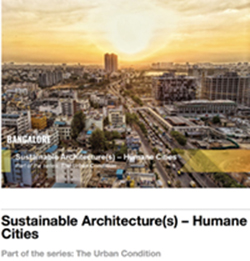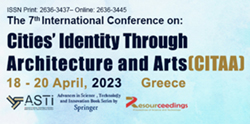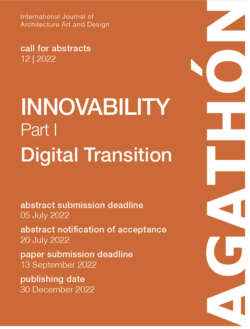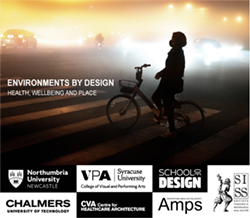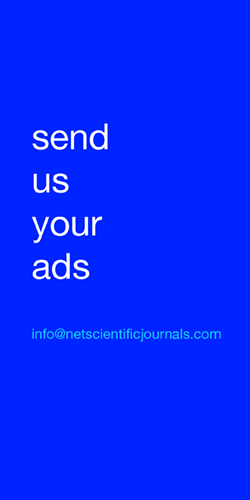Oct
2020
Nov
2020
Mar
2021
Jun
2021
Jul
2021
In the architectonic field, the study, comparison, and connection of morphological properties are crucial to approach a building analysis. Its formal complexity depends on the relationships and inferences between the shapes, according to their spatial and functional hierarchical system. Digital technologies open today new opportunities for the cross-analysis of many cultural heritage artifacts, afar in space but close in features (typologies, styles, compositional rules), stimulating the creation of innovative scientific frameworks. Editors: Livio De Luca and Michele RussoThis goal shifts the focus to the analysis of architectural heritage’s geometric nature towards a new generation of semantic-aware digital models. Beyond the generation of accurate reality-based 3D models, creating an interpretative geometric representation of architectural shapes is essential. It involves researches on shape grammars, parametric modeling, and multi-purposes interpretative models, as well as on the formalisation of historic knowledge. Besides, the integration of AR and MR tools in situ allows reaching a more immersive visualization, improving the analysis of the real world. Finally, as the object’s shape analysis frequently involves interpretation of similarity metrics, artificial intelligence is opening new scenarios in the massive analysis, classification, and morphology segmentation.
The architectonic shape analysis involves different cognitive processes based on traditional and digital methods. The definition of experimental paths to study these shapes and their hierarchical relations is an open topic. The ability to combine theoretical knowledge with technological evolution is a cultural challenge. It moves towards a sustainable framework to merge human-driven interpretation and computer-based massive analysis within cross-disciplinary approaches. This journal issue collects research that may clarify this ongoing transition, opening some future scenarios. Topics of interest include, but are not limited to: Knowledge-based 3D imaging approach to represent the geometrical nature of architectural elements; Semantic modeling methodologies for architecture interpretation and data integration; Comparative analysis and multi-criteria classification methods, tools and applications; AR/MR approaches to geometrical shapes in-situ analysis, understanding, and story-telling; Innovative AI experiences for classification, annotation, and segmentation of architectural models.
Semantic-driven analysis and classification in architectural heritage
In the architectonic field, the study, comparison, and connection of morphological properties are crucial to approach a building analysis. Its formal complexity depends on the relationships and inferences between the shapes, according to their spatial and functional hierarchical system. Digital technologies open today new opportunities for the cross-analysis of many cultural heritage artifacts, afar in space but close in features (typologies, styles, compositional rules), stimulating the creation of innovative scientific frameworks. Editors: Livio De Luca and Michele RussoThis goal shifts the focus to the analysis of architectural heritage’s geometric nature towards a new generation of semantic-aware digital models. Beyond the generation of accurate reality-based 3D models, creating an interpretative geometric representation of architectural shapes is essential. It involves researches on shape grammars, parametric modeling, and multi-purposes interpretative models, as well as on the formalisation of historic knowledge. Besides, the integration of AR and MR tools in situ allows reaching a more immersive visualization, improving the analysis of the real world. Finally, as the object’s shape analysis frequently involves interpretation of similarity metrics, artificial intelligence is opening new scenarios in the massive analysis, classification, and morphology segmentation.
The architectonic shape analysis involves different cognitive processes based on traditional and digital methods. The definition of experimental paths to study these shapes and their hierarchical relations is an open topic. The ability to combine theoretical knowledge with technological evolution is a cultural challenge. It moves towards a sustainable framework to merge human-driven interpretation and computer-based massive analysis within cross-disciplinary approaches. This journal issue collects research that may clarify this ongoing transition, opening some future scenarios. Topics of interest include, but are not limited to: Knowledge-based 3D imaging approach to represent the geometrical nature of architectural elements; Semantic modeling methodologies for architecture interpretation and data integration; Comparative analysis and multi-criteria classification methods, tools and applications; AR/MR approaches to geometrical shapes in-situ analysis, understanding, and story-telling; Innovative AI experiences for classification, annotation, and segmentation of architectural models.
SCOPUS, WoS Emerging Sources Citation Index, SJR.
The Journal does not ask charges for articles and submissions processing.
Editors
Livio De Luca
Michele Russo


